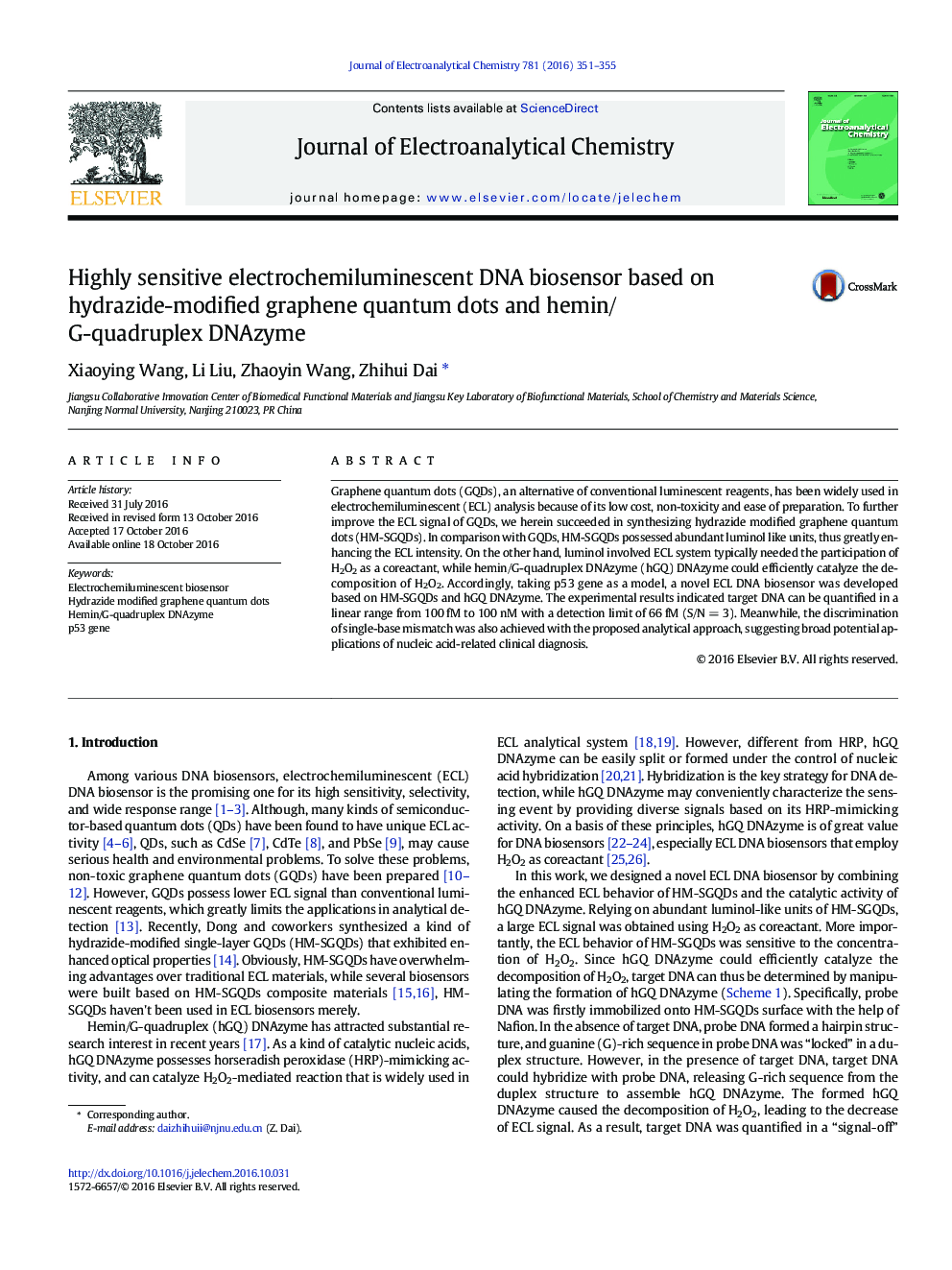| Article ID | Journal | Published Year | Pages | File Type |
|---|---|---|---|---|
| 4908184 | Journal of Electroanalytical Chemistry | 2016 | 5 Pages |
Graphene quantum dots (GQDs), an alternative of conventional luminescent reagents, has been widely used in electrochemiluminescent (ECL) analysis because of its low cost, non-toxicity and ease of preparation. To further improve the ECL signal of GQDs, we herein succeeded in synthesizing hydrazide modified graphene quantum dots (HM-SGQDs). In comparison with GQDs, HM-SGQDs possessed abundant luminol like units, thus greatly enhancing the ECL intensity. On the other hand, luminol involved ECL system typically needed the participation of H2O2 as a coreactant, while hemin/G-quadruplex DNAzyme (hGQ) DNAzyme could efficiently catalyze the decomposition of H2O2. Accordingly, taking p53 gene as a model, a novel ECL DNA biosensor was developed based on HM-SGQDs and hGQ DNAzyme. The experimental results indicated target DNA can be quantified in a linear range from 100Â fM to 100Â nM with a detection limit of 66Â fM (S/NÂ =Â 3). Meanwhile, the discrimination of single-base mismatch was also achieved with the proposed analytical approach, suggesting broad potential applications of nucleic acid-related clinical diagnosis.
